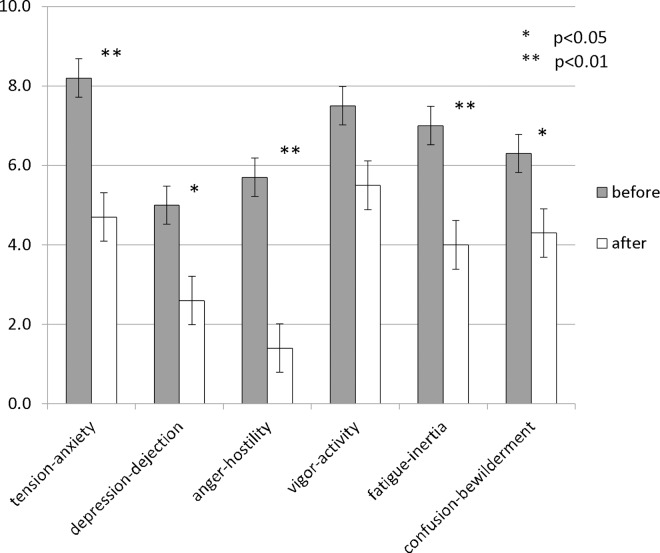EMDR Therapy is a very effective psychotherapy technique that helps deal with distressing thoughts and traumatic memories via rhythmic eye movements. These movements are a form of bilateral stimulation.

What Is Bilateral Stimulation?
Bilateral stimulation is simply an alternating sound, sight, or feeling that you experience.
-
- Bilateral stimulation – SOUND: An example of a sound bilateral stimulation would be snapping your fingers next to your ears, alternately left hand/ear, then right hand/ear. Do this over and over again.
- Bilateral stimulation – SIGHT: An example of a sight bilateral stimulation would be a light pen being run back and forth from left to right in front of your eyes like a doctor does to check your pupils.
- Bilateral stimulation – Feeling: An example of a feeling bilateral stimulation would be crossing your arms across your chest and tapping your shoulders: right hand/left shoulder, then left hand/right shoulder alternately. Do this over and over again.

What Is EMDR Therapy?
By moving your eyes in a certain rhythmic pattern and focusing on traumatic memories or thoughts, the brain is re-trained or “re-processed” to associate more positive emotions with the stimuli. EMDR and Bilateral Stimulation both can help individuals and therapists to deal with a wide variety of mental health concerns. EMDR usually uses a visual form of bilateral stimulation.

EMDR in Arizona
The Arizona Relationship Institute Staff is fluent in a number of psychotherapy techniques including bilateral stimulation, tapping, and EMDR Therapy.
Learn More About EMDR Therapy at AZRI >>
Bilateral Tapping for Anxiety
A very basic form of bilateral stimulation is “tapping,” and is used by many therapists and counselors alike. Bilateral tapping is a mind-body technique that utilizes tapping at meridian points on the body.

Bilateral Tapping Points
-
-
- The side of your hand, just below your little finger (Karate Chop Point)
- The top of your head (Brow Point)
- The inside of your eye (Inner Eye Point)
- Under your eye (Under Eye Point)
- Beside your nose (Side of Nose Point)
- Under your chin (Chin Point)
- The center of your chest (Chest Point)
- The side of your hand, just below your little finger (Karate Chop Point)
-
Bilateral Stimulation and EMDR Success Rates
The success rates of bilateral stimulation and EMDR for cognition and desensitization are clearly evident in recent studies to find out the exact mechanism of therapy.

Image Source: National Institute of Health (NIH) / National Library of Medicine
Tension, anxiety, depression, feelings of dejection, anger, hostility, fatigue, inertia, confusion, and bewilderment can all be desensitized using bilateral stimulation and EMDR therapy.

Reducing Anxiety with Bilateral Stimulation and EMDR Therapy
EMDR and Bilateral Stimulation both work wonders in working-through traumatic experiences and PTSD, but it also can be very helpful in treating anxiety, stress and panic.
Many anxiety sufferers familiar with bilateral stimulation and tapping can perform this stimulation on themselves in times of panic or stress. Just like counting when your mad, tapping and bilateral stimulation can unwind your emotions and “cool you off” emotionally (Desensitization) enough to get comfortably through the situation.
Bilateral Stimulation is the base mechanism used in EMDR Therapy. Therapists use and teach the skills of bilateral stimulation in EMDR therapy sessions. Bilateral stimulations and EMDR can be used to help a number of therapeutic concerns including: trauma, Post Traumatic Stress Disorder (PTSD), Grief, Anxiety, Panic Disorders, Mood Disorders, Depression and a range of other mental health concerns.

EMDR For Grief Therapy
Yes, EMDR can help reduce your sensitivity to stressors that cause depression, but it can also be helpful in treating grief. Not just the depression stages of grief, but all stages of grief:
-
- Denial
- Anger
- Bargaining
- Depression
- Acceptance
Getting through the emotions of anger, bargaining, acceptance, and denial can also be aided with bilateral stimulation and EMDR Therapy. EMDR Grief Therapy helps to reduce your sensitivity to the thoughts and emotions surrounding loss that cause the negative symptoms of grief.
When you are suffering the loss of a loved one or any other deep personal loss, the symptoms of grief can show up without warning. Maybe it is a picture of a lost pet that triggers grief-depression; or, maybe seeing a friend’s life successes reminds you of your own past mistakes and chances never taken, sparking anger. These critical times when grief strikes is an opportunity to use the skills learned in EMDR to desensitize yourself to these negative stimuli, and overcome your bouts of grief.
What To Expect From Bilateral Stimulation & EMDR Therapy
You can expect a deeper insight into how your mind and emotions work, when starting EMDR Therapy. You will begin to learn the skills that therapists use to analyze behavior and your thought processes. You too will begin to see the processes of your mind unfold — you will see how triggers can stimulate you in a positive or a negative manner, and your reaction to these plays a big part in your mood, your happiness, or your sadness/anxiety.
The video above shows 1 hour of continuous Bilateral Stimulation. A bilateral beat, or a visual stimulation like this will be shown to you while you think about certain thoughts, emotions, memories, and images. The combination of your mind viewing the bilateral stimulation + your mind processing the thoughts and memories leads to a “desensitization” of these thoughts and memories.
In short, you practice dealing with the triggers of depression, anxiety, and other mental health issues, and over time you become de-sensitized to the triggers. They no longer evoke such a deep and profound (negative) response in you. Likewise, your brain can be trained to respond in only positive manners to stimuli that would otherwise cause a negative response.
Associating a positive memory with an otherwise sad photo can completely change the emotions that unfold in you after seeing this visual stimulus.

How to Start EMDR Therapy and Bilateral Stimulation in Arizona
The Arizona Relationship Institute and our therapists are well-versed in EMDR Therapy and Bilateral Stimulation. We use this form of therapy (in addition to CBT Therapy, EFT Therapy, and a myriad of other therapies) in our individual, couples, and group therapy sessions. If you are interested in learning more about EMDR for your concerns, or would like to start with a FREE 15 Minute Consultation, contact AZRI Today!









